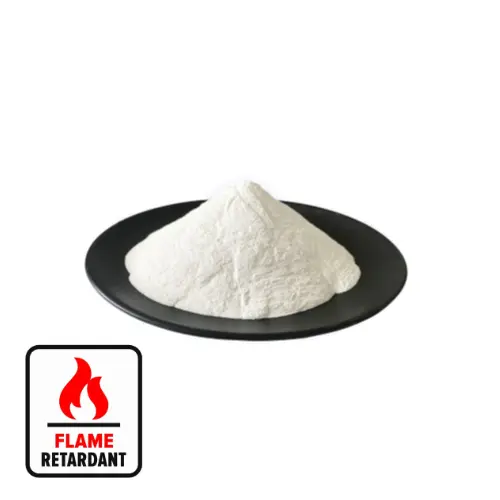Overview of Magnesium Hydroxide
Magnesium hydroxide , chemical formula Mg (OH)2, is a colorless hexagonal column crystals or white powder, difficult to dissolve in water and alcohols, soluble in dilute acid and ammonium salt solution, aqueous solution is weakly alkaline. The solubility in water is very small, but the part dissolved in water is completely ionized. The concentration of saturated aqueous solution is 1.9 mg/l (18℃). Heating to 350°C loses water to form magnesium oxide. Magnesium hydroxide as an important inorganic chemical product ‘because of its strong buffering properties, high activity and adsorption capacity, handling and use of safety and non-corrosive, non-toxic, harmless, and many other unique properties’ is known as “environmentally friendly” environmentally friendly treatment agent It is called “environmentally friendly” environmental treatment agent.
Preparation method
1. Magnesite grinding method
The main component of the natural mineral magnesite is magnesium hydroxide, which is one of the minerals with the highest magnesium content found in nature. Magnesite grinding method for the preparation of magnesium hydroxide, is the magnesite crushed into magnesite powder (150 μm), and then magnesite powder air flow crushed to 1 ~ 26 μm powder (by surfactant-modified magnesium hydroxide). This magnesium hydroxide manufacturing process is simple and less expensive. This method produces heavy magnesium hydroxide. This method is mainly used to produce magnesium hydroxide in the northeast of China.
2. Chemical synthesis method
Chemical synthesis method is the use of brine containing magnesium chloride, brine ore, etc. and caustic alkali substances in the aqueous medium reaction, the generation of magnesium hydroxide slurry, after filtration, hydrothermal treatment, washing, surface treatment, drying to produce magnesium hydroxide. The more widely used methods of chemical synthesis include calcium hydroxide, ammonia, and sodium hydroxide. Light magnesium hydroxide is produced using these methods.
2.1 Calcium hydroxide method
Principle: MgCl2+Ca(OH)2 = Mg(OH)2↓+CaCl2. also known as the milk of lime method, is a traditional method of preparation. The advantage of this method is that the raw materials are easy to obtain, the production process is simple, and the cost is low. However, due to the small particle size of the product (up to 0.51μm or less), the tendency of poly adsorption, difficult to settle, filtering and washing, and easy to adsorption of silica, calcium, iron and other impurity ions, so the product purity is low, and is only applicable to the purity of the industry is not too high, such as flue gas desulphurization and acidic wastewater neutralization, and so on.
2.2 Sodium hydroxide method
Principle: MgCl2 + 2NaOH = Mg(OH)2↓ + 2NaCl. It is the use of magnesium chloride aqueous solution and caustic soda reaction to prepare magnesium hydroxide. A typical production process for this method is shown in Figure 2. The sodium hydroxide method is a simple process with high product purity and high yield. However, the production cost is the highest, the filtration performance of magnesium hydroxide is poor, the process is technically and economically poor, and the by-products are used for salt for alkali plants, which is more desirable for co-production. Compared with ammonia method, the mother liquor recovery of this method is not as easy as ammonia method.
2.3 Ammonia method
Principle: MgCl2+2NH3+2H2O =Mg(OH)2↓+2NH4Cl. It is to use ammonia as precipitant, is an important method to produce magnesium hydroxide. Due to the weak alkalinity of ammonia, it will increase the solubility of Mg(OH)2, thus the reaction process is easy to control, and it can produce high purity and microfine magnesium hydroxide, and it can also produce products with large crystal grains that are easy to be washed. This method is commonly used for the production of magnesium hydroxide in China, and in recent years, the main improved preparation processes are the one-step method and the continuous precipitation method.
(1) One-step method
This method is a new method of preparing flame retardant grade magnesium hydroxide developed by Hu Qingfu et al, which is a one-step completion of the precipitation reaction, hydrothermal treatment and surface treatment, shortening the process, with less investment in equipment and lower cost, and the performance of the product is also improved compared with the traditional method. This method is suitable for brine with high concentration, especially brine with magnesium mass concentration around 30 g/L.
(2) Continuous precipitation method
It is the continuous precipitation of brine-ammonia to produce magnesium hydroxide, which is an improvement of the traditional method. This method adopts lime milk evaporation of ammonia to realize ammonia recycling, which can reduce the production cost and ensure the product quality, but the effect is obvious only under the economy of scale.
Principle:
MgCl2+2NH3+2H2O=Mg(OH)2↓+2NH3C
CaCO3=CaO+CO2↑
CaO+H2O=Ca(OH)2
2NH4Cl+Ca(OH)2=2NH3↑+2H2O+CaCl2
The process has a high feed concentration while maintaining a relatively low degree of supersaturation, there is always a quantitative amount of crystal species present in the system, and the retention time of the material in the reactor can be adjusted. This method has high raw material utilization, short reaction time, low equipment investment and good product stability.
3. Magnesium oxide hydration method
Magnesite-rich areas focus on the promotion of light burning powder direct hydration method to produce magnesium hydroxide. Magnesium oxide requirements must be light magnesium oxide, otherwise it is not easy to realize.
Principle:
MgCO3=MgO+CO2↑
MgO+H2O = Mg(OH)2
Application Fields
High purity magnesium hydroxide is widely used in flame retardants, fillers, catalysts, etc. It has high economic and social value because it is non-toxic, harmless and non-corrosive.


